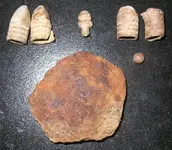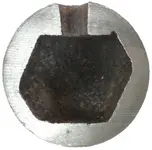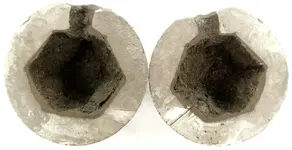gtoast99
Sr. Member
Hey ya'll! I have a quick question that maybe some of you can help out with. I was digging at a site near the Battle of Bentonville, NC. This particular field had the Union coming out of the treeline and taking some Confederate fire. Sure enough we found several fired and struck Confederate bullets in the area. Around the same place I found this big hunk of iron, and didn't think much of it until my friend pointed out that it was rounded, and he thought it might be a cannonball or shell fragment. The big problem I see with that is that it has a pronounced curve on one side, but appears much more flat on the other. So I'm really up in the air about this being a fragment or not. It'd be cool if it was, since it would be a first for me.
Anyways, I've attached a picture showing the fragment but also the video I made of the whole day. You can see it much more clearly in the video, and if you don't want to watch the whole thing, it's near the end so you can skip to it.
Thanks for looking, and in advance for any replies, it's certainly got me curious.
[youtube=425,350]Cv3CIvn29z8[/youtube]
Anyways, I've attached a picture showing the fragment but also the video I made of the whole day. You can see it much more clearly in the video, and if you don't want to watch the whole thing, it's near the end so you can skip to it.
Thanks for looking, and in advance for any replies, it's certainly got me curious.
[youtube=425,350]Cv3CIvn29z8[/youtube]








